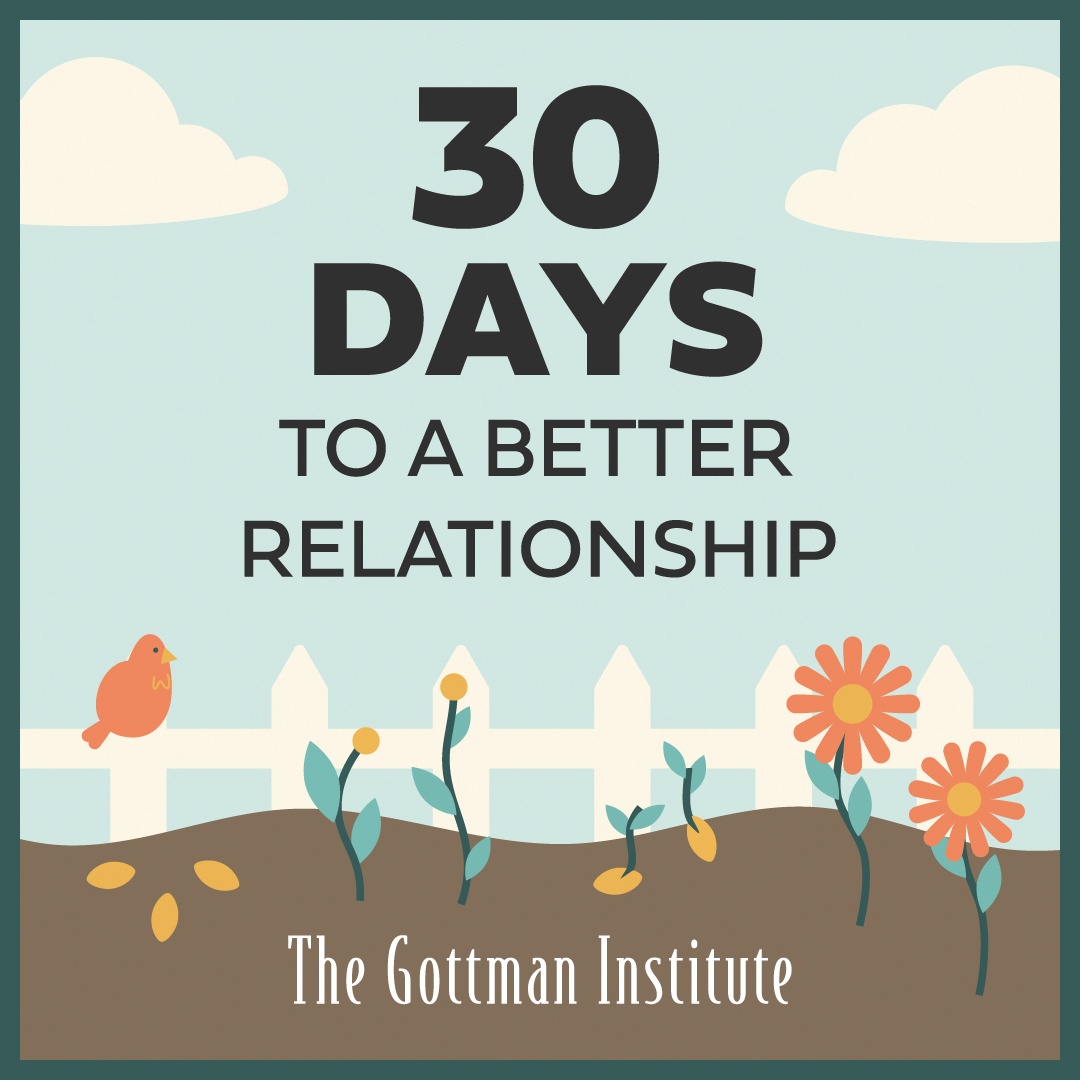The last, but certainly not least, of the Four Horsemen is stonewalling. Stonewalling is, well, what it sounds like. In a discussion or argument, the listener withdraws from the interaction, shutting down and closing themselves off from the speaker because they are feeling overwhelmed or physiologically flooded. Metaphorically speaking, they build a wall between them and their partner.
Rather than confronting the issue, someone who is stonewalling will be totally unresponsive, making evasive maneuver such as tuning out, turning away, acting busy, or engaging in obsessive behaviors. It takes time for the negativity created by the first three horsemen to become overwhelming enough that stonewalling becomes an understandable “out,” but when it does, it frequently becomes a habit.
If you’re more of a visual learner, here is a short clip with an explanation of stonewalling from John Gottman, as well as an example of what it looks like:
When you are making every effort to address a problem, whether you are attempting to talk about something that is upsetting you, explain your feelings about an ongoing area of conflict, or try to reach a resolution — and your partner is pretending that you aren’t there — you are likely to reach a level of frustration or anger so high that you psychologically and emotionally “check out” as well.
Trying to communicate with someone who is acting in this way can be frustrating, and if the stonewalling continues, infuriating.
What’s the antidote to stonewalling?
When one person begins stonewalling, usually they are physiologically flooded, which has a number of indicators: increased heart rate, the release of stress hormones into the bloodstream, and even a fight-or-flight response. When that happens, it is impossible to continue discussing the issue at hand in a rational and respectful way; you’re simply too physiologically agitated to do so.
The first part of the antidote to stonewalling is to STOP.
Take a break
However, this is a bit easier said than done. If you try to stop the argument and walk away singlehandedly, that could be interpreted by your partner as an even bigger display of stonewalling, and it could escalate the situation. What you’ll need to do is agree ahead of time on an appropriate and recognizable way to take a break. Think of a neutral signal that you and your partner can use in a conversation to let each other know when one of you feels flooded with emotion. This can be a word, a phrase, a physical motion, or simply raising both hands into a stop position. Come up with your own! And if you choose a silly or ridiculous signal, you may find that the very use of it helps to de-escalate the situation.
Really, it doesn’t matter what that request for a break looks or sounds like, as long as it is respectful and that both you and your partner agree to recognize it when you need a break and, most importantly, agree to honor that request for a break.
So, if you are stonewalling and feeling flooded, say that you need a break using whatever signal, word, or phrase you and your partner have decided upon. Let each other know when you’re feeling overwhelmed.
Then, you need to walk away and do something soothing on your own. This break should last at least twenty minutes since it will take that much time for your bodies to physiologically calm down.
The Practice of Physiological Self-Soothing
The second step to counteracting stonewalling is to practice physiological self-soothing.
It is crucial that during this time you avoid thoughts of righteous indignation (“I don’t have to take this anymore!”) and innocent victimhood (“Why is he always picking on me?”). You really want not to think about the situation, or about your partner, and you want to do something that will help you self-soothe. When you have moved apart to take your break, attempt the following:
1. Imagine a place that makes you feel calm and safe.
A sacred space where nothing can touch you. It may be a place you remember from childhood — a cozy corner you read in, your old bedroom, or a friend’s house. It may be a beautiful forest you explored on a trip. As you imagine yourself in this sanctuary, lose yourself in the peace of mind that it brings you. Meditating on a haven in your imagination can be a perfect, relaxing break from a difficult conversation.
2. Practice focusing on your breath.
Your breathing should be deep, regular, and even. Usually, when you get flooded, you either hold your breath a lot or breathe quick and shallow. So, inhale and exhale naturally. You may find yourself calmer and more centered if you stop for a moment, breathe, and allow the noise around you to temporarily fade away.
3. Tense and relax parts of your body that feel tight.
Feel the warmth and heaviness flow out of your limbs. Take your time. This technique is similar to a focus on breathing, but you may find one or the other preferable. Work with either of these techniques to feel your stress flow away.
4. Spend your time doing something soothing and distracting.
For example: listening to music, reading a book, or taking a walk around the block. Do anything that takes your mind off the argument so that you don’t keep thinking about it.
What can we learn from stonewalling?
Masters of relationships maintain a 5:1 ratio of positivity to negativity during conflict discussions. Positive interactions include displays of interest, affection, humor, empathy, and affirming body language (like eye contact and head nodding). While it may be intuitive that negative exchanges outweighing the positive is a sign of relationship trouble, the 5:1 ratio also suggests that negativity is healthy as long as the ratio is maintained and the four horsemen are not present.
Predictors of stonewalling
Cycles of non-constructive arguing and a lack of positive affect are major predictors of stonewalling, particularly predictive of stonewalling being used as an attempt to self-soothe or de-escalate, but backfiring and resulting in relationship deterioration.
Dynamics of stonewalling
When these cycles grow more and more intense, physiological arousal begins to skyrocket, and the following dynamics emerge:
- For both partners, there is:
- A decrease in the ability to process information (reduced hearing, reduced peripheral vision, problems with shifting attention away from a defensive posture).
- An increase in defensiveness.
- A reduction in the ability for creative problem solving.
- A reduction in the ability to listen and empathize.
- Men are consistently more likely to stonewall than women. They will withdraw emotionally from conflict discussions while women remain emotionally engaged. 85% of stonewallers studied in the Love Lab were men.
- When women stonewall, it is quite predictive of divorce.
- Men are more likely to rehearse distress-maintaining thoughts than women, which may prolong their physiological arousal and hyper-vigilance, often causing their partners to flare up in response, until both are brought to a point of emotional detachment and avoidance.
- Male stonewalling is very upsetting for women, increasing their physiological arousal (things like increased heart rates, etc.) and intensifying their pursuit of the issue.
Final thoughts
In summary stonewalling is bad, but here is a good rule to follow. When the two of you are in conflict, and someone checks out, check in with them and take a break. In other words, when stonewalling starts, STOP. Attempts to continue will not make productive headway for either of you, but rather will intensify your shared conflict and emotional distress.
We think taking a break of this sort is so important that we schedule this exercise into the conflict-resolution section of every workshop that we run. Soothing themselves makes couples better able to work on their conflicts as a team rather than as adversaries.
Your and your partner’s mental health play a large role in determining the health of your relationship. Don’t forget to take care of yourselves! Self-soothing is a very useful and effective act of self-care, and if you each devote enough time and energy to self-care (getting enough sleep, nutrition, exercise, time for pursuit of your passions), you may see the frequency and intensity of fights between the two of you drop dramatically.
Remember: the ability to self-soothe is one of the most important skills you can learn. Practicing it can help you not only in romantic relationships, but in all other areas of your life.







